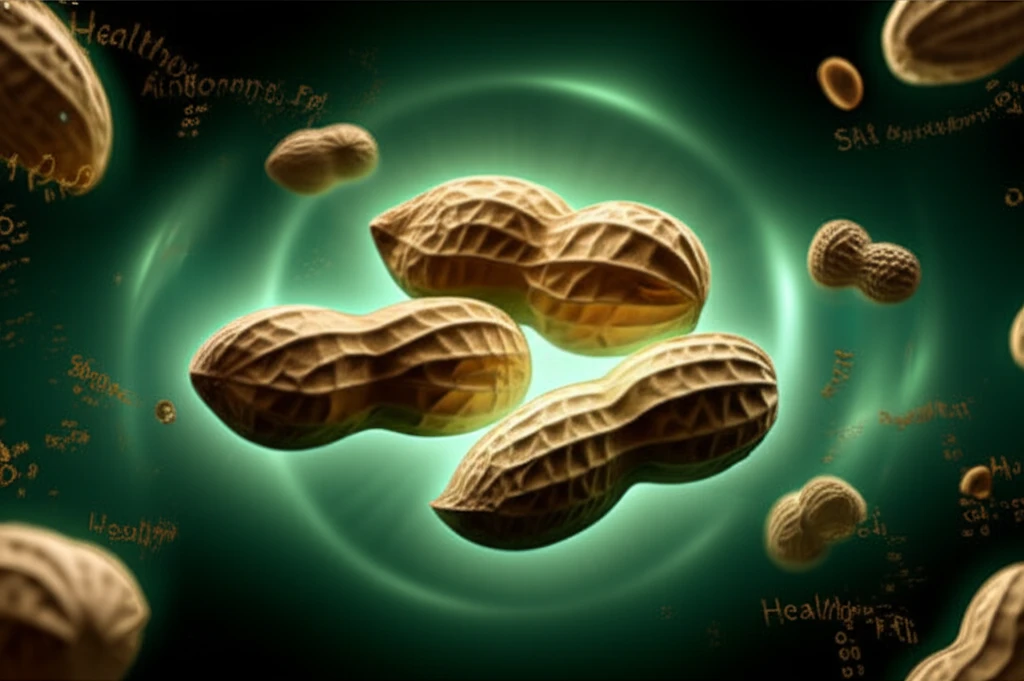
Peanuts Under the Gamma Ray: How Radiation Could Boost Your Snack's Health Profile
"Exploring the unexpected benefits of gamma irradiation on peanuts: From enhanced antioxidants to healthier fats."
Peanuts are already nutritional powerhouses, packed with protein, vitamins, and healthy fats. But what if there was a way to enhance these benefits even further? Gamma irradiation, a process primarily known for eliminating fungal contamination, may hold the key to unlocking a new level of health potential in this popular snack.
Gamma irradiation involves exposing food to ionizing radiation to kill harmful microorganisms. It's a safe and effective method, but recent research suggests it can also influence the nutritional composition of peanuts, potentially boosting their antioxidant capacity and modifying their fatty acid profiles.
This article dives into the fascinating world of gamma-irradiated peanuts, exploring how this process affects their color, antioxidant activity, and fatty acid composition. We'll unpack the science in an accessible way, revealing how irradiation could lead to peanuts that are not only safer but also healthier.
Unlocking Peanut Power: The Effects of Gamma Radiation

A study published in the journal Ciência e Tecnologia de Alimentos investigated the impact of gamma radiation on two peanut cultivars: IAC-Tatu ST and IAC-Runner 886. The peanuts were exposed to varying doses of gamma radiation (5.0, 7.5, 10.0, and 15.0 kGy) and then stored at room temperature. Researchers then analyzed changes in color, total phenolics, antioxidant activity, and fatty acid profiles. Here's a breakdown of the key findings:
- Phenolic Boost: In IAC-Tatu ST peanuts, a dose of 10.0 kGy significantly increased total phenolics compared to the control group (58.60 mg/g vs. 33.27 mg/g). This indicates that irradiation can enhance the availability or synthesis of antioxidant compounds.
- Antioxidant Activity: While the study didn't find a significant difference in antioxidant activity at the 10.0 kGy dose, the increase in total phenolics suggests a potential for enhanced antioxidant benefits.
- Fatty Acid Shift: Gamma radiation also influenced the fatty acid composition of the peanuts. At the 10.0 kGy dose, researchers observed a decrease in saturated fatty acids and an increase in unsaturated fatty acids, including linoleic acid. This is generally considered a positive change, as unsaturated fats are linked to better heart health.
The Future of Peanuts: Irradiation and Enhanced Nutrition
The research suggests that gamma irradiation could be a valuable tool for improving the nutritional profile of peanuts, making them a healthier snack option. By increasing antioxidant compounds and shifting the fatty acid composition towards a more favorable balance, irradiation could unlock the full potential of this widely consumed food.
However, further research is needed to fully understand the long-term effects of gamma irradiation on peanut quality and stability. Factors like storage conditions and oxidative stability need to be carefully considered.
Gamma irradiation offers a promising avenue for enhancing the nutritional value of peanuts. As research progresses, we may see irradiated peanuts become a common choice for health-conscious consumers.
